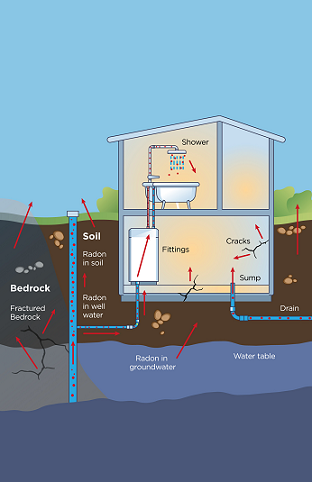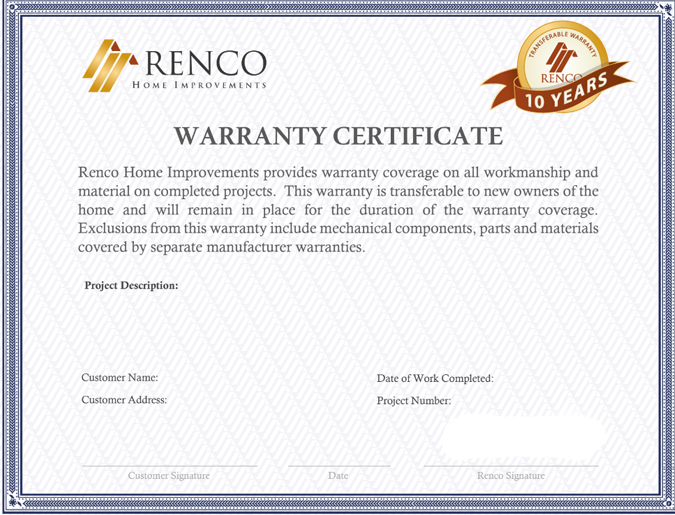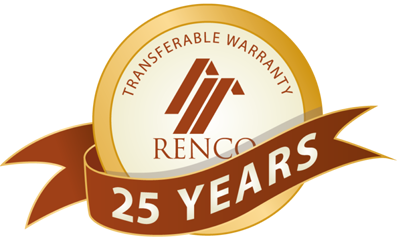Frequently Asked Questions
Lorem ipsum dolor sit amet, consectetur adipiscing elit. Morbi consequat mi orci. Quisque placerat rutrum odio eget sodales. Aliquam erat volutpat. Nam tempus vel mi a dapibus. Sed aliquet congue hendrerit. Maecenas ornare, dui eu commodo vestibulum, diam leo laoreet turpis, at feugiat lacus libero id metus.
Below is our four-step process for accurate radon gas testing.
1. Site Inspection We come out and check your foundation for cracks, gaps around pipes – all the places radon sneaks in. Our team’s got 25 years experience, we know what to look for.
2. 7-Day Testing We leave professional detectors in your home for exactly 7 days. Not 2 days, not 5 – has to be 7. Radon levels bounce around with weather and seasons, so you need a full week to get real numbers.
3. Results Review We go over your readings together. If they’re safe, you’re done. If they’re high, we talk about what needs fixing – no scare tactics, just straight facts.
4. Fix & Retest (if needed) Start with the basics – seal cracks and gaps where radon enters. Then we test another 7 days to prove it worked. Most problems get solved this way before needing fancy systems.
Timeline: 2 weeks for testing only, 3-4 weeks if mitigation work is needed.
Bottom line – Renco tests it right, fixes what actually needs fixing, and verifies the work.
Yes, Tarion new home warranty includes seven-year coverage for radon remediation when levels exceed Health Canada’s threshold of 200 Bq/m³. This vital consumer protection recognizes radon as a “major structural defect” under environmentally harmful substances or hazards, providing Ottawa homeowners with an important safety net.
To access this coverage, homeowners must first conduct proper long-term testing (minimum three months) to document the elevated levels before making a claim. Tarion’s coverage can save homeowners thousands of dollars in remediation costs if elevated levels are found. This warranty protection reflects the growing recognition of radon as a significant health concern in Ottawa’s housing market. It provides an additional reason to test new homes despite their built-in radon-resistant features.
Source:
Tarion.com – Home your new home warranty protects against randon gas
Radon enters Ottawa homes primarily through the foundation, where the building contacts the soil. According to Health Canada and City of Ottawa documentation, radon can seep into buildings through dirt floors, cracks in foundations or concrete, sump pumps, joints, and basement drains. In some cases, well water can also contain trapped radon, which may be released into the air when water is drawn.
A pressure differential drives the process—homes typically operate at slightly lower pressure than the surrounding soil, drawing radon gas inside. This “stack effect” is powerful in Ottawa’s climate, where heated homes in colder months create stronger upward air movement that pulls soil gases inside. Once radon enters, it can accumulate to dangerous levels, especially in lower, less ventilated home areas like basements.

Image: Health Canada, Randon and Home Health Report
Source:
New homes built in Ottawa under the Ontario Building Code require three specific radon mitigation measures: installation of a soil gas barrier, rough-in for a subfloor depressurization system, and installation of a whole-house ventilation system (typically an HRV or ERV). These requirements apply to all new low-rise residential and small building construction, including additions.
However, these code-required measures don’t guarantee low radon levels—they’re designed to make future mitigation easier if needed. The soil gas barrier consists of polyethylene sheeting with lapped joints, the rough-in includes a perforated pipe below the air barrier system, and the ventilation system helps dilute indoor air. Despite these protections, Health Canada and building officials still recommend testing all homes, as actual radon levels can only be determined through proper measurement.
Source:
Radon is a significant concern in Ottawa, with geological studies confirming high radon potential across approximately half the city. The 2016 National Capital Region study by Radon Environmental Management identified that the City of Ottawa has relatively high radon potential covering about half of its area.
This elevated risk is due to Ottawa’s unique geological makeup, particularly areas overlying the Billings Formation, Eastview member of the Lindsay Formation, and parts of the Bobcaygeon Formation. Health Canada’s cross-country survey confirms that about 10% of homes nationally will test above the radon guideline, but local geology can significantly increase this percentage in specific regions like Ottawa.
Resources:
1) Canadian Geoscience Education Network (CGEN) – Ottawa-Gatineau Randon map
2) Ottawa Public Health – Randon in Your Home information guide
A foundation crack is a break or fissure in the foundation wall or floor. Various factors, including soil settlement, hydrostatic pressure, and freezing and thawing cycles can cause these cracks. Foundation cracks can allow water to seep into the basement, leading to moisture damage, mold growth, and structural issues.
Renco provides a 10-year transferrable warranty on all interior epoxy injection foundation repairs.
For exterior foundation repairs, Renco provides a 25-year transferrable warranty.
If you sell your home, the transferrable warranty will cover the new homeowner for the life of the warranty period.
Upon completion of the foundation repair, Renco will provide you with a written warranty document, signed and dated.
Foundation Crack Repairs Can Last a Lifetime OR Fail: Learn Why
Foundation cracks can be a serious problem for homeowners, as they can lead to water infiltration, structural damage, and even the collapse of the foundation. If you’ve discovered a crack in your basement foundation, it’s important to take action to repair it as soon as possible. But how long can you expect a foundation crack repair to last?
If done right, foundation crack repairs should last for the lifetime of your house.
At Renco, we back all foundation crack repairs with a 25-year transferrable warranty. This means if you sell the home, you can pass on the warranty to the new owner in case of future issues.
Factors Affecting the Lifespan of Foundation Crack Repairs
The lifespan of foundation crack repairs can vary depending on a number of factors, including:
- The severity of the crack: A small, hairline crack may be easier to repair and less likely to reappear than a larger, more severe crack.
- The type of repair method used: Different repair methods have different lifespans. Some repairs may only last a few years, while others can last for several decades.
- The underlying cause of the crack: If the crack is caused by ongoing foundation settlement or movement, the repair may not be effective in the long term.
Common Foundation Crack Repair Methods and Their Lifespans
Our basement waterproofing repairs are backed by a lifetime transferrable warranty.
1) Epoxy and Polyurethane Injection
One common method of repairing foundation cracks is injection with epoxy or polyurethane. These materials are designed to fill the crack and prevent water from entering the foundation. Epoxy and polyurethane injections are generally considered to be long-lasting repairs, with a lifespan of 10 years or more. For more info, you can read our DIY guide to epoxy crack injections here.
2) Carbon Fiber Reinforcement
Another common method of repairing foundation cracks is using carbon fiber reinforcement strips. These strips are applied to the foundation’s surface and help distribute the load across a wider area, reducing stress on the crack. Carbon fiber reinforcement repairs are considered to be long-lasting and can last for 25 years or more.
3) Hydraulic Cement, Piers, and Anchors
Other repair methods include hydraulic cement, which can be effective for sealing small cracks but may not be suitable for larger cracks or those caused by ongoing foundation movement. Another option is the installation of foundation piers or anchors, which can help to stabilize the foundation and prevent further cracking.
The Importance of Addressing Underlying Foundation Crack Issues
It’s important to note that the lifespan of any foundation crack repair depends on the underlying cause of the crack. If the crack was caused by ongoing settlement or movement of the foundation, the repair may not be effective in the long term. In such cases, additional repairs or even foundation replacement may be necessary.
Example of underlying foundation issue:
For example, if a foundation crack is caused by expansive soils that are prone to swelling and shrinking, a long-lasting repair may require addressing the soil issues. This could involve installing a foundation drainage system, improving the grading around the foundation, or even installing soil stabilization measures.
Similarly, if a foundation crack is caused by poor soil compaction or inadequate footings, the repair may need to address these issues in addition to sealing the crack. This could involve installing additional footings, reinforcing existing ones, or even excavating and re-compacting the soil beneath the foundation.
Homeowners’ insurance may cover foundation repairs if the damage is included in your policy. Although the majority of homeowners insurance policies we see exclude the natural settling, cracking, or expansion of foundations. This includes damage due to tree roots or faulty construction.
Before contacting your insurance, we recommend reviewing your policy to see if foundation repair is included.
For new homes, foundation repair may be covered under your builder’s home warranty.
Foundation crack repair costs have a large range. From a few hundred dollars on the low-end to well over $50,000 for extensive repairs that require excavation of your exterior foundation.
At Renco, we have four price ranges for foundation crack repair include:
1) Range One: Foundation Inspects ($0 – $300)
Renco provides free consultation and advice to homeowners on foundation crack issues. If you need written advice or an in-depth review of multiple cracks we offer a “Professional Foundation Inspection” service that provides a written document and a two-hour inspection.
2) Range Two: Non-Structural Crack Repair ($950 – $2650)
Most horizontal and vertical cracks fall into this range. The repair process usually includes an epoxy injection to seal the crack. All these repairs are backed by a 25-year transferrable warranty. The price for this repair depends on how many cracks, how deep OR large the cracks are, and whether there are any structural or moisture concerns.
3) Range Three: Structural Crack Repairs ($1200 – $4000)
Structural cracks pose a serious threat to the integrity of your home’s foundation. There are several repair methods depending on the severity of the issue including epoxy injections or carbon fiber countersunk staples.
Structural cracks are often wider than a 1/4 of inch and horizontal
4) Range Four: Exterior Excavation Crack Repair ($5000 +)
When you have moisture or water leaking into your basement, an exterior crack repair is necessary. This process involves excavating the soil around your foundation where the problem is, fixing the crack, applying a waterproof membrane, and backfilling material against your foundation.
The cost for exterior crack repairs is dependent on how much of your foundation needs to be excavated.
Yes, both old and new homes foundations crack. Small cracks are often cosmetic due to concrete settling overtime or large moisture/humidity changes in the basement. These types of cracks are called “hairline foundation cracks” and can be easily repaired with concrete acrylic paint or left alone and monitored.
If you have a new home, the hairline foundation cracks may be covered under your homeowner’s warranty. These cracks occur as the concrete shrinks during the curing process.
If you spot a crack larger than 1/10th inch, we recommend taking a photo of the crack and monitoring progression OR contacting a professional foundation repair company for advice.
You should be worried about foundation cracks that have the following signs:
- Cracks larger than the diameter of a quarter (0.75 inchs)
- Cracks that have a “step pattern” – common in block foundations
- Long diagonal cracks that extend over 2 meters
- Foundation cracks that extend from the ceiling to the floor
- Cracks that have moisture or water leaking out of them
- Foundation cracks that continue to grow over time.
If you spot a foundation crack we recommend taking a photo of it and sending the image to Renco. We can provide advice on whether the crack is serious and what to do next.
Yes, all projects are covered by Renco’s transferable warranty program so you can be confident in your investment.
Plus if you sell your home the warranty is transferred to the next owner.
Yes it is (providing you don’t decide on additional work or changes). A Renco estimator will visit your proposed renovation site and discuss the project with you. We then provide a written estimate that exactly details the work we will do and what materials we will use.
Most of our personnel have many years of experience and have professional qualifications in their individual disciplines. Our apprentices, of course, have less experience but are always supervised by senior trades people. Our team counts licensed electricians, plumbers, gas-fitters and professionals in flooring, tiling, drywalling, landscaping, masonry, painting, insulation, soundproofing, etc.
In Ottawa, a building permit is usually required to renovate, demolish, construct or make permanent changes to the use of your home. Examples of projects requiring a building permit include:
- Load-bearing structures
- Plumbing updates
- Electrical changes
- Major home additions
Getting a building permit is for your safety and ensures that all work passes safety standards, keeping your home insurable.
We work with you to make the building permits process go smooth. We have done successfully hundreds of times and can prevent roadblocks that slow your project done.
For more information visit the City of Ottawa’s “Building Permits and Renovating” webpage.
Our job quote is our final price (see above), removing the possibility of “creeping” costs as the work proceeds. A Renco quote comes from a trained professional—it isn’t “loaded” to get the job (unfortunately, less scrupulous contractors will quote on a job knowing full well that the project will require extra costs that the homeowner doesn’t have much choice but to pay once the job is underway).
Yes, as a professional renovation contractor we carry $2,000,000 in insurance. This protects your home and our business.






